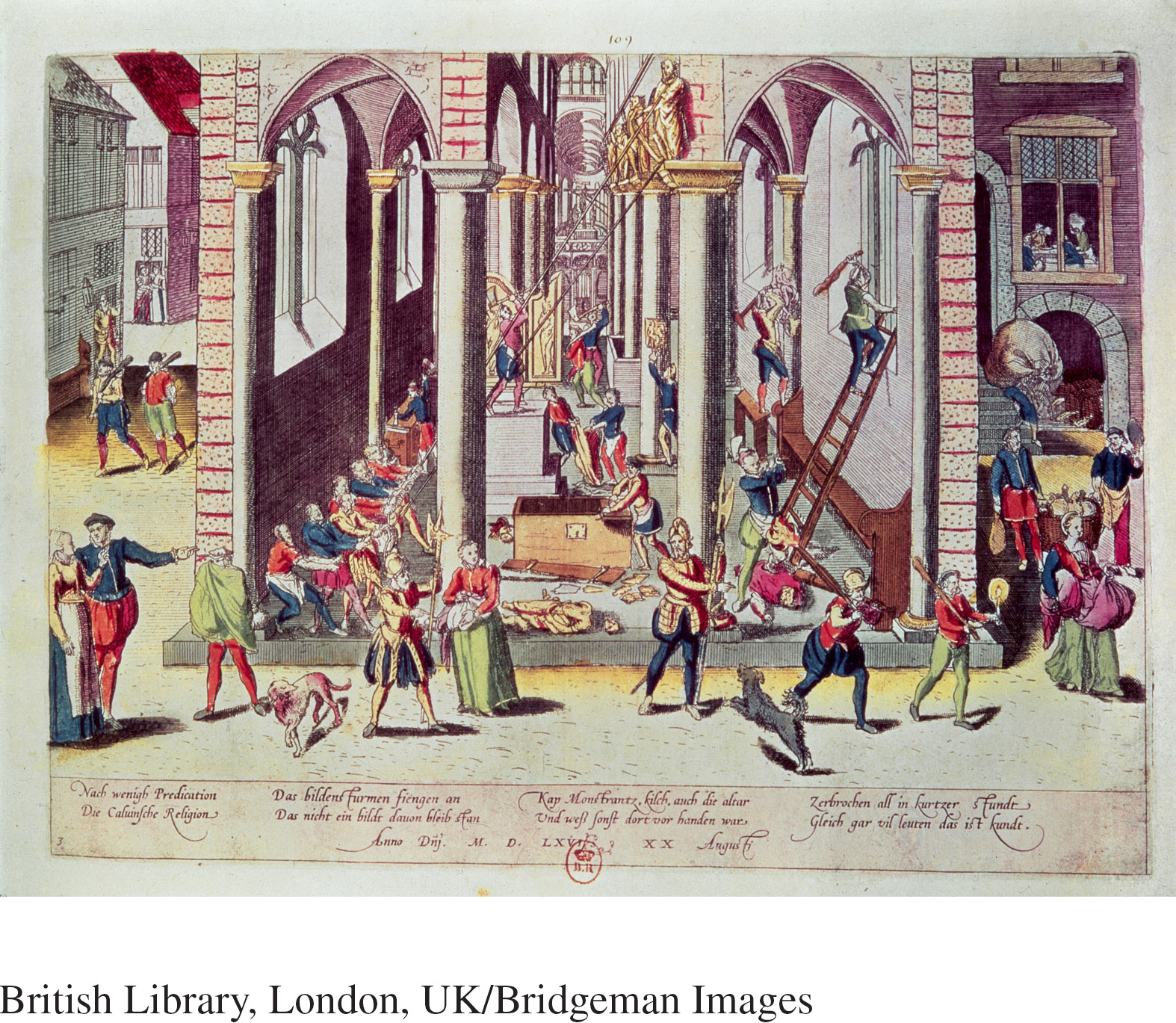Source 15.2: Calvinism and Catholicism
Protestant opposition to Roman Catholic practice was not limited to matters of theology, liturgy, and church corruption, but came to include as well the physical appearance of churches. Martin Luther was suspicious of the many sculptures and paintings that served as objects of devotion to the Catholic faithful, but John Calvin, the prominent French-
Perhaps the most dramatic expression of these ideas took place in regions of Europe where Protestants took over formerly Roman Catholic churches for their new forms of worship. During the 1560s, waves of Protestant image smashing, sometimes called the Iconoclastic Fury, took place in England, France, Switzerland, the Netherlands, and elsewhere. This engraving, produced in 1566 at the height of these religious conflicts, depicts Protestants “cleansing” a Catholic church in Antwerp in what is now Belgium of what they viewed as idolatrous decorations but Catholics revered as objects of devotion.
An English Catholic observer described this event and others like it with horror: “These fresh followers of this new preaching [Protestantism] threw down the graven and defaced the painted images. . . .
These often-
Questions to consider as you examine the source:
- What elements of the Catholic description of this attack can you identify in the image? What other acts of destruction can you notice?
- What differences in religious understanding lay behind such attacks?
- What accounts for the passion displayed in these attacks? Is this kind of religious violence a thing of the past or does it have contemporary counterparts today?
Calvinists Destroying Statues in a Catholic Church, 1566

Notes
- Robert S. Miola, ed., Early Modern Catholicism: An Anthology of Primary Sources (Oxford: Oxford University Press, 2007), 59.